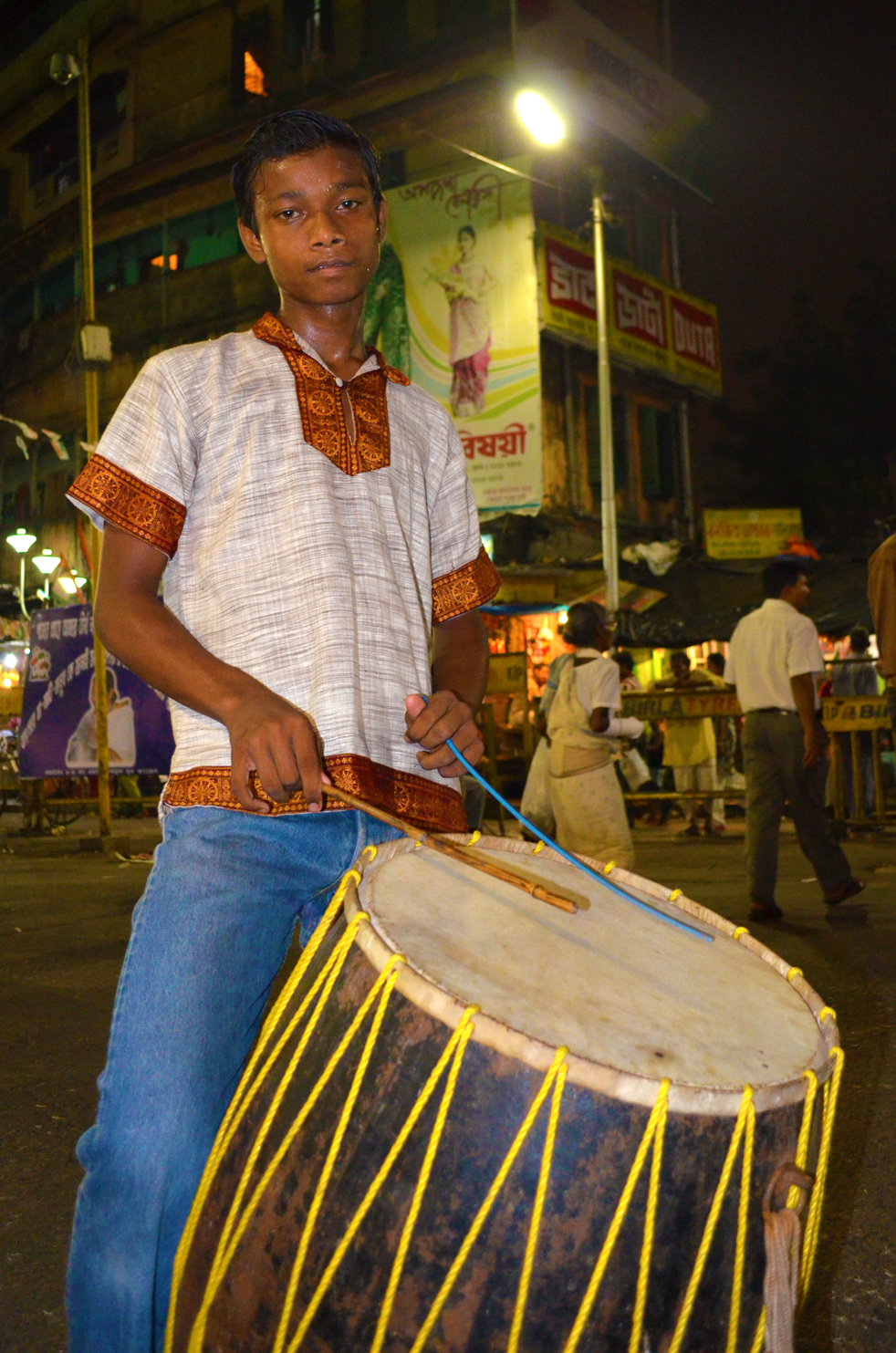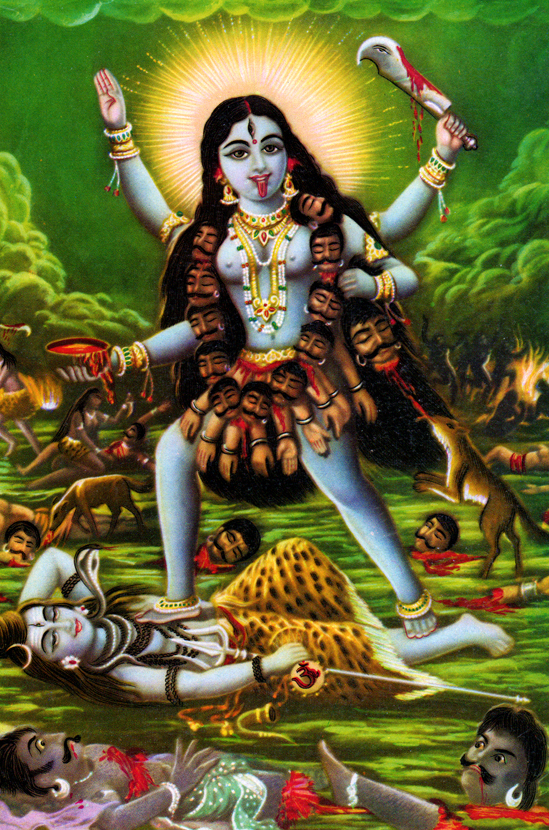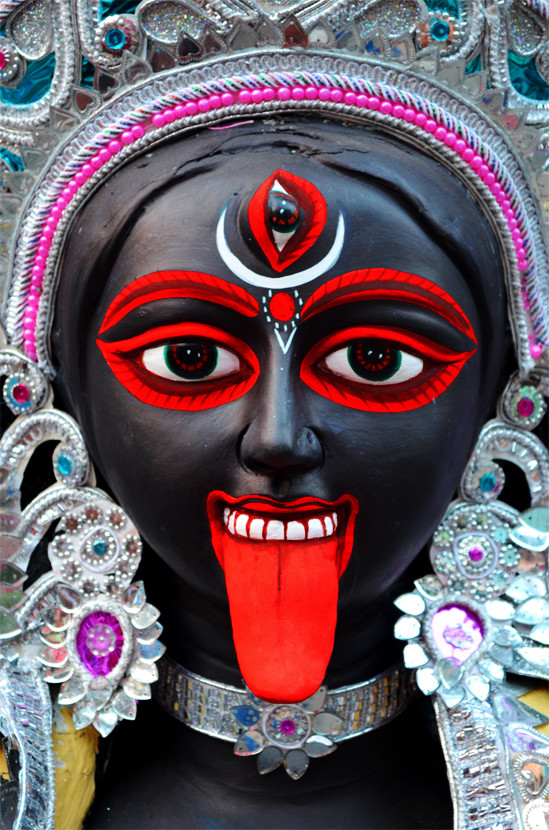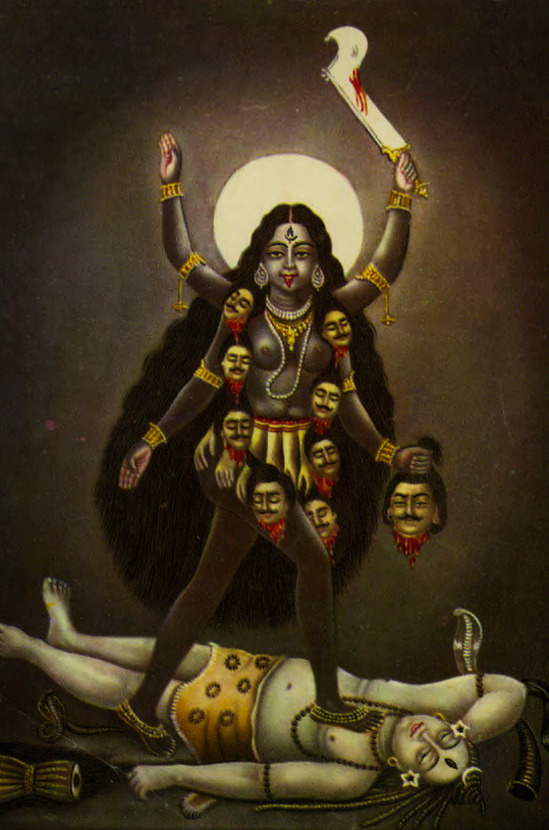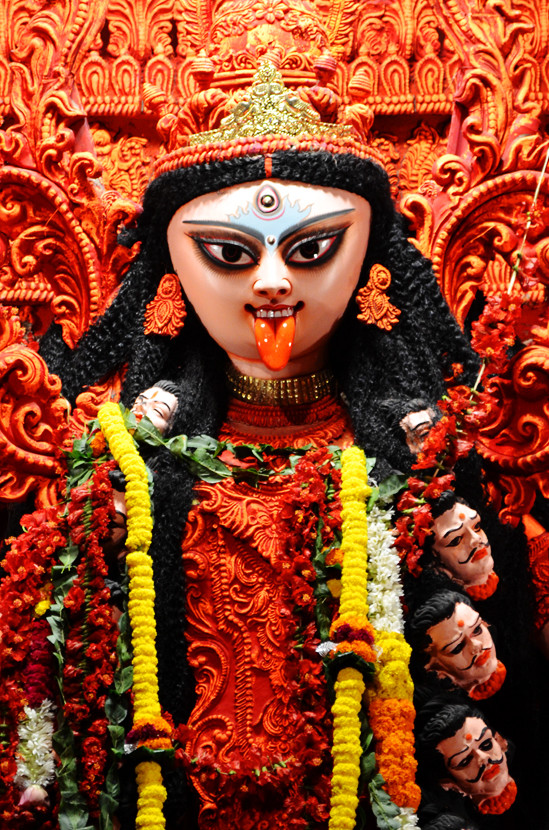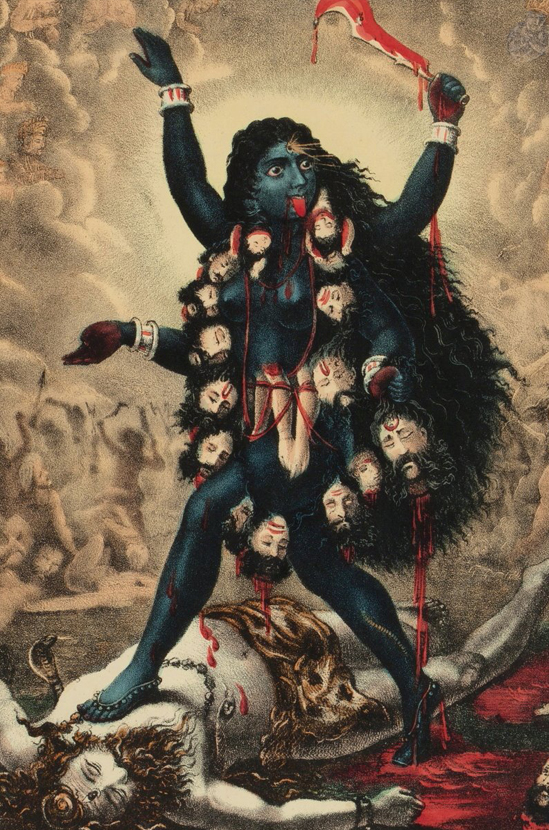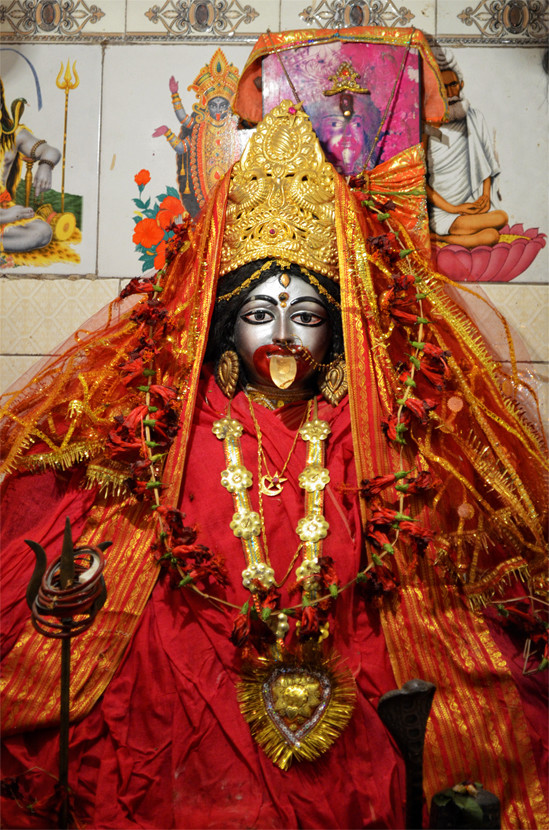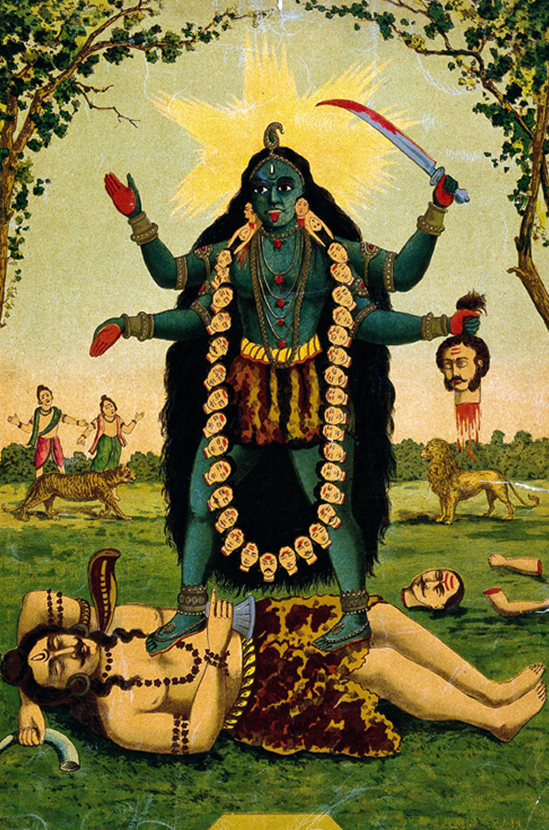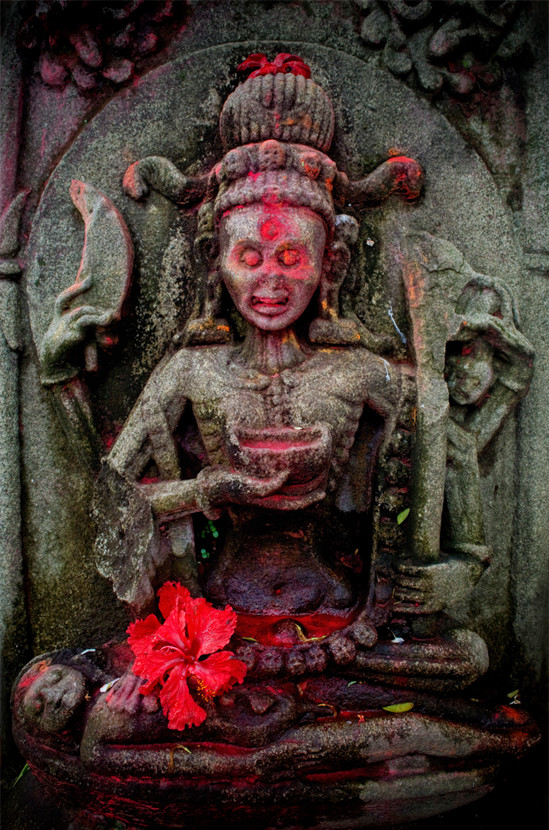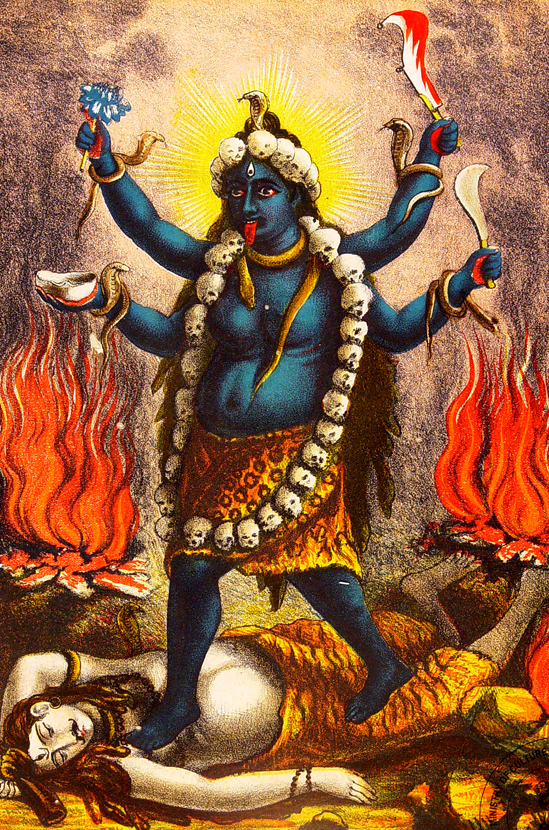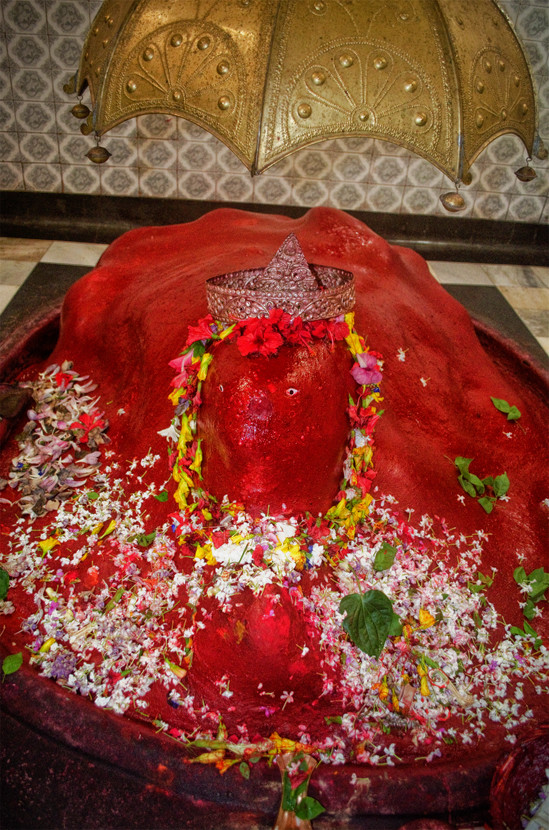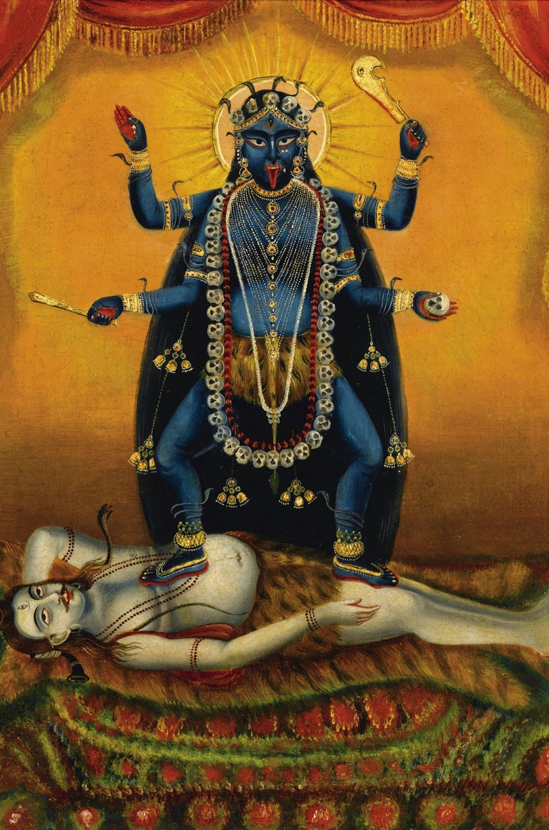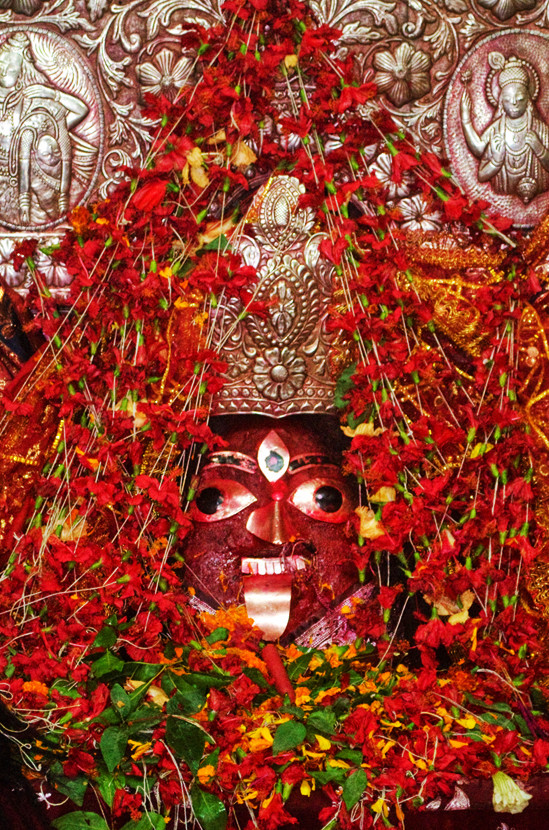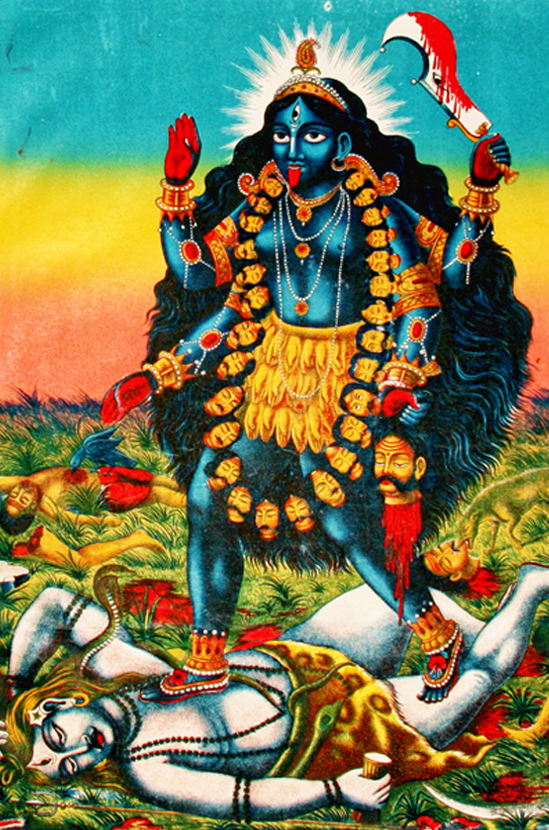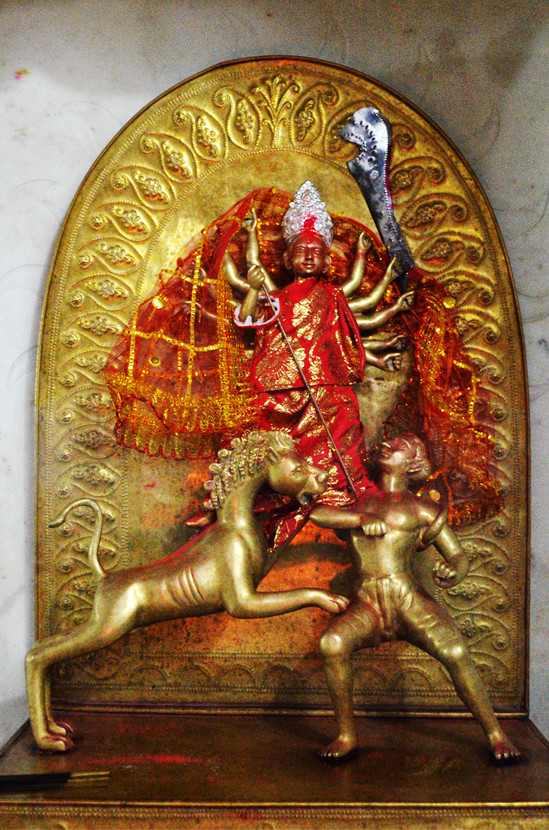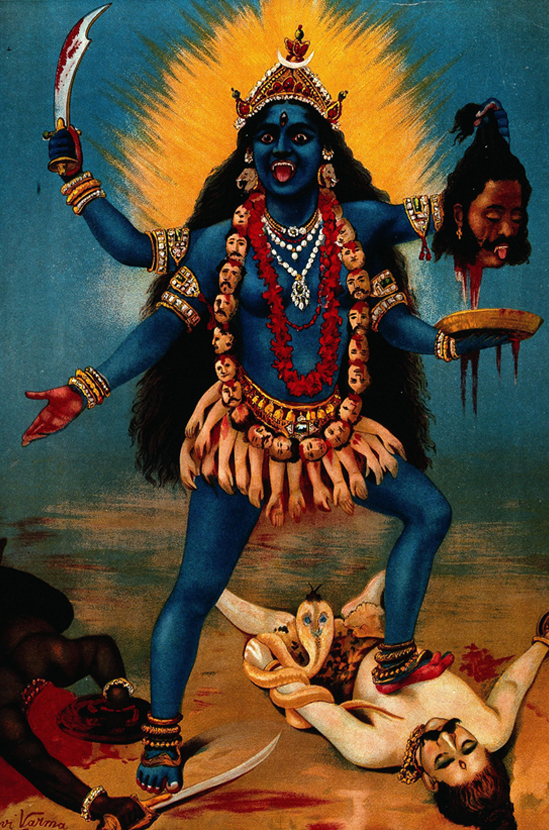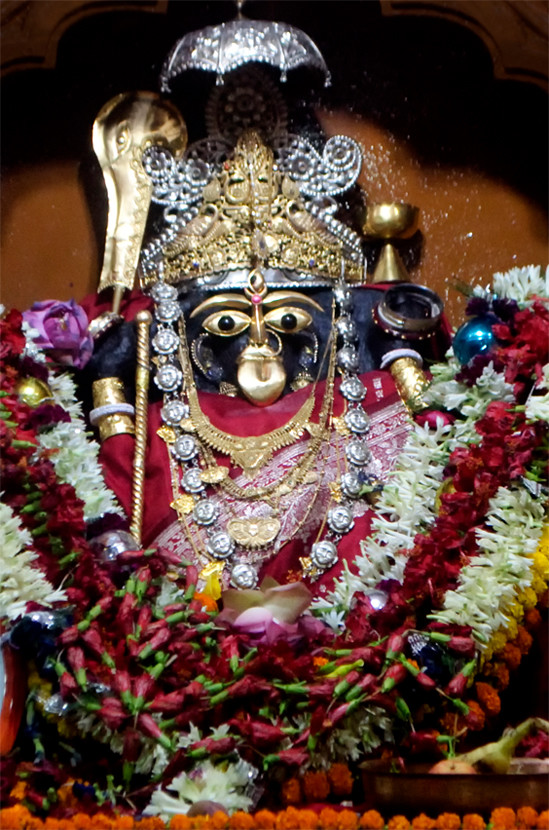Evening Aarti at Kalighat’s Northern Entrance
It is now 2 a.m. and I am staying up all night to see what I can collect from the opening ceremonies of Durga Puja early tomorrow morning near the Kalighat Kali Mandir. Julie and I were invited to attend an all female vocal performance at 5 a.m. and I hope to be recording that as well as grabbing some photographs of the amazing pandal displays near the temple. Even though it is very early in the morning, trucks carrying large images of Ma Durga are driving past our apartment right now to the beat of large drums called dhak. Exciting times for a person like myself who is interested in both Shaktism and Bengali culture.
Last night’s explorations yielded a nice recording of the evening aarti which took place at a small shrine near Kalighat Kali Mandir’s northern entrance. A pujari wearing solid red (the color most often associated with Shakta and Tantrik traditions) clothing offered ritual worship to the large Shiva lingam that is the focus of a shrine which also houses several other deity images including Ram, Durga, and a 3-4 foot tall Hanuman statue among others.
I was lucky enough to have my recording equipment turned on as the aarti was beginning. You can hear a slight volume increase as I approach the shrine and take my place directly next to the large dhak drum that was played by a teenage boy who identified himself as “Lala.” It could be a nickname of his, or he could have been joking with me. In any case, he also let me take a picture of him with his dhak which I am including along with an audio clip.
The aarti, although a rather simple rite, is one that contains a rich symbolism. In general, aarti refers to the waving of lights before the deity’s image. However, the full ritual traditionally has at least four more steps, each of which is allocated symbolically to one of the five classical elements: earth, water, fire, air, and ether. For example, a priest may dip a flower–symbolizing the earth element–into water and then flick his wrist to sprinkle the deity’s image with water. Lamps containing burning wicks soaked with ghee are waved before the image in a clockwise motion to represent fire. A fan made from the feathers of a peacock is waved toward the deity in a gesture symbolizing the air element. And lastly, ether is represented by the gentle swinging of a yack-tail whip before the image. The tools and order may vary, but the symbolism always attempts to be all-encompassing in it’s scope and will thus contain the five elements. Usually sound is employed along with the ritual and as I approached I noticed a group of young males: two playing dhak, several beating metal gongs, and one ringing a bell which adorned the temple.
I recorded throughout the duration of the ceremony and am posting what I gathered here. Although it is definitely not good for my ears, I must confess to enjoying being right in the middle of this incredibly loud and completely disorienting rhythmic noise as it occurs. Others who appreciate different types of sound might find some enjoyment in the categorically non-musical elements of clanging metal coupled with the impetuous rhythms of the dhak:

